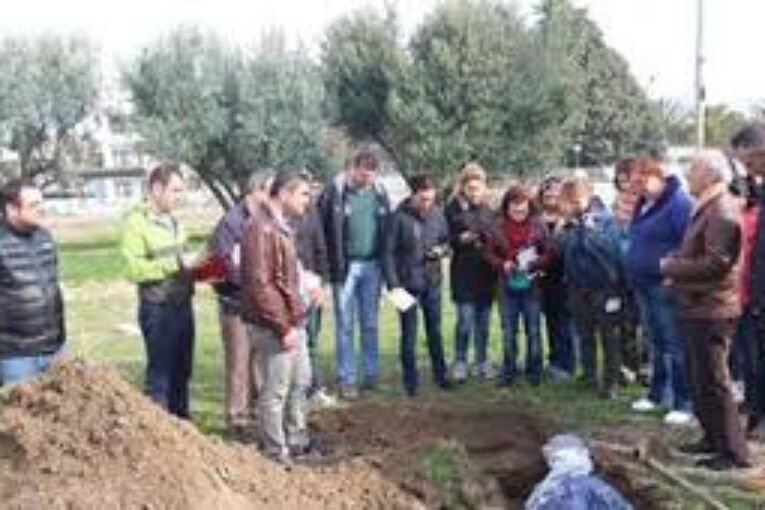
What is Soil Moisture??
- Water contained in soil is called soil moisture. The water is held within the soil pores.
- Soil moisture is the water that is held in the spaces between soil particles.
- Soil moisture is a key variable in controlling the exchange of water and heat energy between the land surface and the atmosphere through evaporation and plant transpiration.
- Soil moisture plays an important role in the development of weather patterns and the production of precipitation.
- Soil moisture information is an important parameter for:
- Crop production estimation.
- Irrigation scheduling/crop water stress assessment.
- Water resources inventory/water supply planning.
- Hydrological processes modelling.
Importance of Soil Moisture
- Cause changes in the physical, chemical and biological properties of soils.
- Causes the soil particles to swell and shrink.
- Soil structure (porosity).
- Soil air and void ratio.
- Soil microbial population.
- Part of chemical reactions that release and tie up plant nutrients.
- Leaches excessive salts/contaminants.
- Main carrier for excessive salts and sodium.
Soil Moisture Measurement
- Gravimetric Method
- Neutron Probe
- Capacitance Probe
1. Gravimetric Method
Coring soil samples of known volume and determining their weight loss when dried in an oven at 105oC.
- Standard method
- Widely used
- Laborious and time consuming
- Prone to errors in sampling and repeated weighing.
- Can’t distinguish between structural and non-structural water.
- Clays may not be totally dried while organic matter may oxidize.
2. Neutron Probe
Measuring soil water content from the energy reduction of neutrons released in the soil. A radioactive source of fast (high energy) neutrons is released at a given depth of the soil and the number of neutrons which are slowed or thermalized by the collisions with hydrogen nuclei, mainly in soil water, is measured by a detector.
- Measuring soil water content in a radius of about 10cm for wet soil and 25cm for dry soil.
- Not useful for top layer of soil (0-5cm).
- Needs to be calibrated against gravimetric method.
- Fast and little labour.
- Accurate for measuring changes in water content rather than the absolute value.
- Precautions for radioactivity.
3. Capacitance Probe
Determine soil water content from measuring the dielectric constant of the soil at a point. A probe is inserted to the soil and the tip is in contact of soil where the dielectric constant is measured.
- Point measurement.
- Particularly useful for top layers of soil.
- Sensitive to local inhomogeneities and air gaps between probe and soil.
- Needs calibration using gravimetric method.
- Non-radioactive.
Remote Sensing & GIS Methods
- Visible & near IR- Reflected Solar
- Thermal IR- Surface Temperature
- Active Microwave- Backscattering
- Passive Microwave- Microwave
1- Visible& Near IR- Reflected Solar
- Reflected solar energy is measured (0.4 – 1.7mm).
- Relationship between reflectance and SM Depends on reflectance of dry soil, roughness, colour, illumination, organic matter, soil texture.
2- Thermal IR- Surface Temperature
- Variations in soil moisture have a strong influence on the thermal properties of the soil, which is an intrinsic factor of soil surface temperature change.
3- Active Microwave- Backscattering
- Active microwave remote sensing observations of backscattering have the potential to measure moisture content in a near-surface layer of soil.
4- Passive Microwave- Microwave
- Microwave remote sending provides a unique capability for soil moisture estimation by measuring the electromagnetic radiation in the microwave region.
- The fundamental basis of microwave remote sensing for soil moisture is the large contrast between the dielectric properties of water and soil particles.
Role of Remote Sensing and GIS??
- Rapid data collection over large areas on a repetitive basis.
- They provide the spatial and temporal distribution of soil moisture coverage.
- Easy data acquisition at different scales and resolutions.
- The images are analysed in the laboratory thus reducing the amount of field work.
- These methods do not disturb the object or area of interest.
- Map revision at medium to small scales is economical and faster.
Effect on Soil Structure
- The water content at which the soil is compacted plays an important role in soil structure.
- Soils compacted at water content less than optimum water content have flocculated structure.
- Soils compacted at water content more than optimum water content have dispersed structure.


